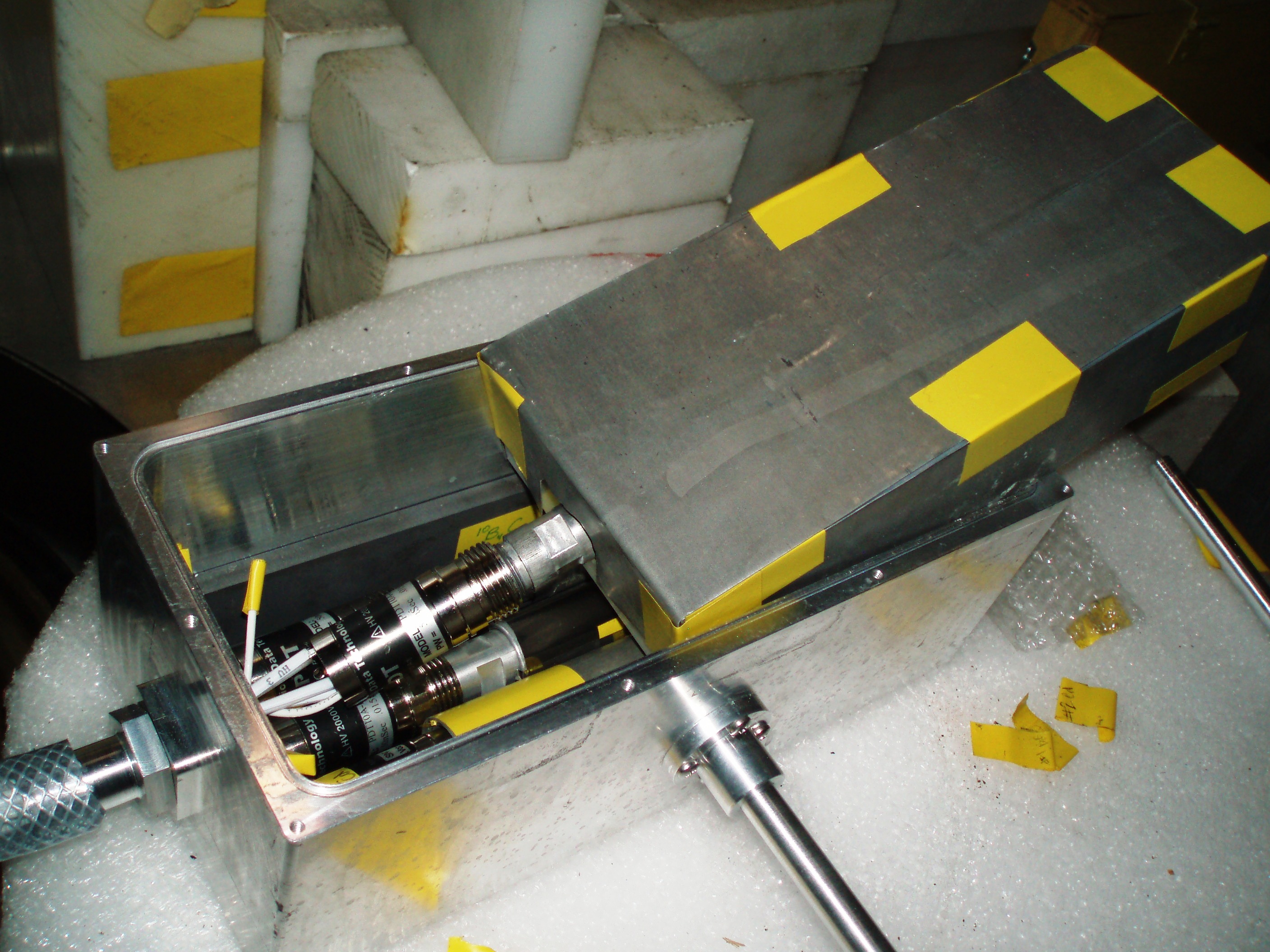
Figure
30. View of the SINRD unit internals used in experimental
measurements at LANL
SINRD relies on solely on the neutron emissions of the spent
fuel without any active interrogation. SINRD uses four fission
chambers. Three of the fission chambers are covered with
different filtering materials that absorb neutrons in different
energy ranges. The neutron energy spectrum from the spent
fuel was quantified by subtracting the count rate in different
fission chambers. A ratio of the difference between the count
rates of two fission chambers to the count rate another of another
fission chamber was used to minimize systematic
uncertainties. The filtering materials of the fission
chambers were specifically selected to make the fission chambers
sensitive to neutron energy ranges corresponding to resonances in
the neutron absorption cross sections of U-235, Pu-239, and
Pu-241. Thus, depressions in the neutron energy ranges
quantified by the SINRD detector correspond to the amount of U-235,
Pu-239, and Pu-241 in the spent fuel. This allows SINRD
to quantify the amount of those fissile isotopes in the fuel.
Source: J. Hu, H.R. Trellue, S.J. Tobin, T.J. Ulrich, A.M.
LaFleur, C.R. Freeman, H.O. Menlove, and M.T. Swinhoe, "The
Performance of Self-interrogation Neutron Resonance Densitometry in
Measuring Spent Fuel," Journal of Nuclear Materials
Management 40:3 (2012).